Analysis
Vice in the Art World: Kenny Schachter’s Adventures at the London Auctions and FIAC
Find out what happened when Vice Media dropped by Kenny's home.
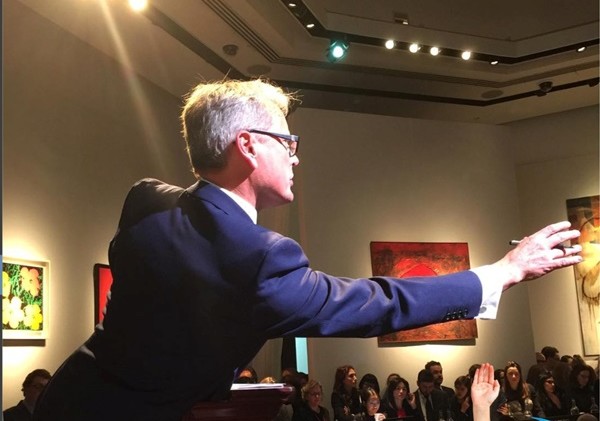
Find out what happened when Vice Media dropped by Kenny's home.

Kenny Schachter

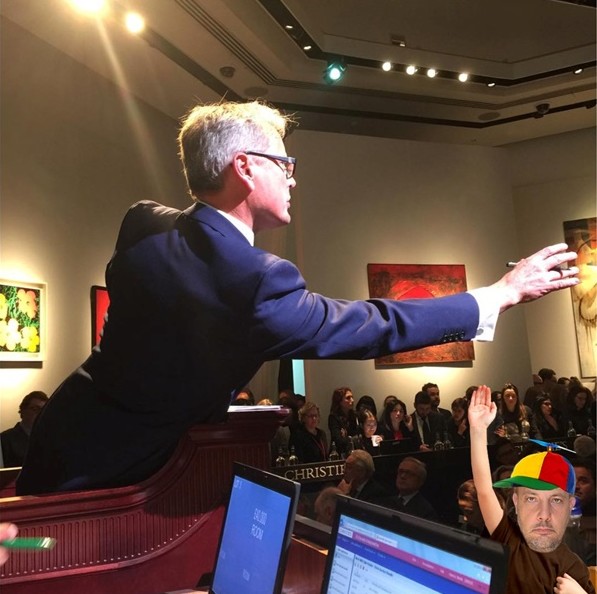
Postwar and contemporary art auction at Christies.
Image courtesy of Kenny Schachter.
(For Frieze coverage, see Kenny Schachter on the Good, the Bad, and the (Very) Ugly of London Frieze Week—Part I)
The Auctions
Vice Media dropped into my house in London a short while ago to shoot for an upcoming series on the art market that they’re in the midst of producing for HBO; I was slated to appear in three episodes. There was a strapping buck of a presenter, a producer, and a handful of tech guys and gals who had just returned from pariah lands such as Iran, North Korea, Somalia, Afghanistan, and Yemen filming renegade pieces with little more than gumption. So obviously, they felt more than qualified to tackle the art market, admittedly having never entered a gallery or auction house. After batting away repeated questions on money laundering, sundry manipulations, and subterfuge, I commented that despite their fishing expedition, art dealing was nothing of the sort; rather, it’s a much more mundane, well-trodden, and well-controlled field of commerce like any other. I wasn’t asked back, needless to say, but let’s see how they slice and dice my comments.
Stopping my last piece after the Frieze fair but before the auctions was like holding it in mid-stream while urinating—no fun for me but probably a relief for everyone else. So here is the rest. Though I certainly appreciate it, I am not much for Italian art, but the genre killed it in London sales, surpassing international contemporary for the first time. You can’t be enthused about everything, can you? I do love the terracotta Fontana’s yet I am suspicious why all the paintings, being hoarded by the Nahmads en masse (not to mention everyone else in the free and un-free world), all look so…freshly painted, like they were made at Christie’s. Even Phillips is getting in on the action. So there must be plenty. Fontana is today’s art market Bitcoin.
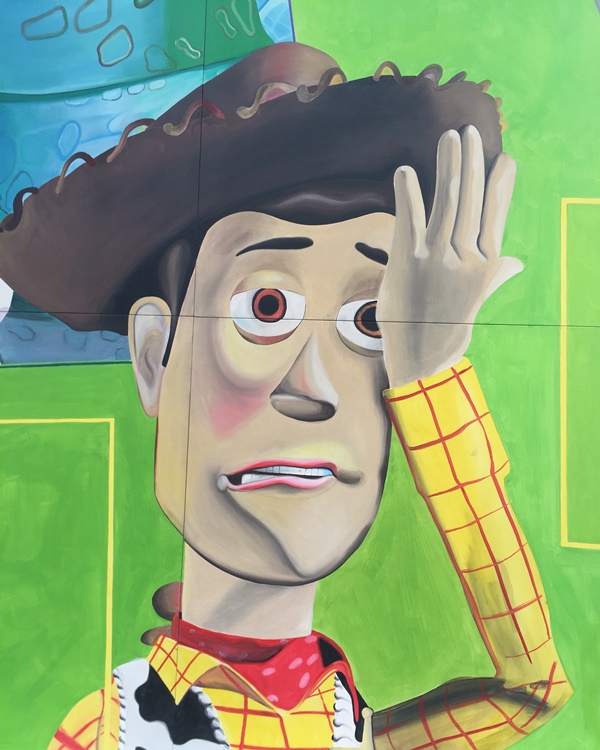
Detail of work by Michel Majerus at Neugerriemschneider, Berlin.
Image: Kenny Schachter
The history of limited editions dates back to the time sculpture was first cast and the process led to the necessity of multiple iterations to perfect the artist’s intent. The notion has been bastardized over the years, however, to reflect the cost-effective ease of fabrication and the value of knocking off dozens of the same, or nearly the same, work, to feed demand rather than any artistic purpose of perfecting the thing itself. First art, watches, and cars then everything else: it’s a reflection of marketing and a Rumpelstiltskin-esque desire to spin currency from CNC (computer numerical control) machines.
See Kenny Schachter On the Good, the Bad, and the (Very) Ugly of London Frieze Week—Part I
Sorry, what I was getting at was that Ai Weiwei, of whom I am a monumental fan, has married art to political activism in the manner in which Warhol bedded celebrities (figuratively, to express collective adulation) while becoming a superstar himself. What irks me, though, is how the artist, his galleries and the auction houses not only shy away from mentioning the subject of editioning but go further in misrepresenting the uniqueness of the works altogether. Someone might inform Vice that an edition by any other name is still a multiple and worth less than a single unique item.
As an example, take the dueling stools: two versions of the work “Grapes”, 32 stools joined together, made £422,500 (est. £350,000-£450,000) at Christie’s and £437,000 (est. £350,000-£450,000) at Sotheby’s for an indistinguishable work. Nowhere does it mention there are more than one of these pieces. In fact, he’s had loads of stools joined into the thousands for certain installations. Not dissimilar to his 100,000,000 sunflower seeds for the Tate Modern in 2010, now sold by the kilo (many must have suffered through making them). I don’t even think Weiwei knows how many ancient ceramic vases have been splashed with the Coca-Cola logo painted across (£266,500 on est. of £250,000-£350,000 at Christie’s): in a vivid act of creative destruction, he’s got a veritable license to print money. And ahead of his now well received show at the Royal Academy, they’ve been coming out of the woodwork in droves.
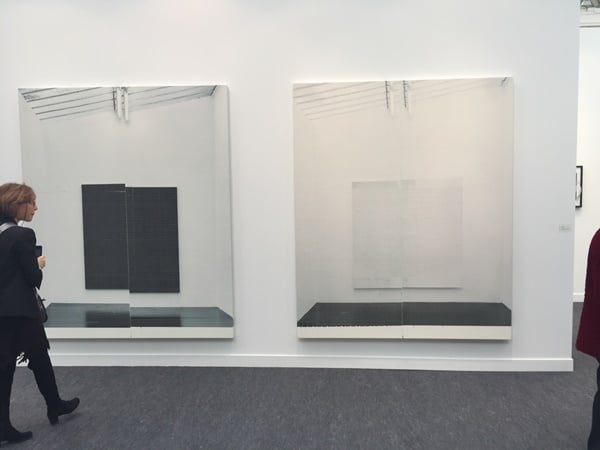
Wade Guyton, Untitled (2015).
Image: Kenny Schachter
Here’s my last word on the issue: the porcelain watermelon that sold at Christie’s for £62,500 on an estimate of £50,000-£70,000 described in the catalogue as “Executed in 2006, this work is unique,”—that language is plainly false. Guess it’s not in my best interest to be writing this but I can’t help myself: I own two of them and from my research determined that there are 60 of them out there—30 with a smooth finish and 30 with ridges (like Ruffles brand potato chips, another marketing ruse).
Christie’s hijacked Simon de Pury’s latest effort to launch an eponymous auction firm on the premises of Mallet antique showroom on Dover Street for purposes of selling a chunk of the LAC (Lambert Art Collection) staged by designer to the rich and famous, Jacques Grange. The collection was the result of the efforts of Baroness Marion Lambert, no stranger to disseminating collections at auction having previously sold a large group of photographs at Christie’s in 2004 with de Pury at the helm. Her theory on collecting could be said to be out with the (relatively) new and in with the newer. Another case of the auction houses pandering to collectors with a habit of selling.
The Wool count in the mid-term, nothing-special October London sales was seven abstract paintings in all (and a photo), with Lambert offloading a total of four (what must the artist make of it all?). Wool is the contemporary market’s security blanket with a record for an abstraction set in November of 2014 for a black and white flower patterned 1993 work, estimated at $7,000,000-$9,000,000, which sold for $8,900,000. And a text work at $29,930,000 in May 2015 at Sotheby’s for RIOT, his stature will only grow in spite of his contribution to FIAC (see below).
Phillips had a contemporary evening sale completely, 100 percent sold-out at $49,000,000, their first in 11 years, and a fabulous result (a pimple on the butt of a Christie’s day sale but still)! They call the phenomenon a “white glove auction”, meaning a sale where everything is sold. I attempted to elucidate the derivation of the term but for once the Internet came up short, for this is all I found in a chat room:
Answer: It means that 100% of the items were sold
Duh.
One of the highlights was Rudolf Stingel’s large black and blue early (less coveted) abstract painting estimated at £700,000-£1,000,000 which sold for an unprecedented £1,930,500 to the Nahmad family who have a show weeks away, not to mention there is a major museum show rumored to be in the works (ask Deep Pockets).

Christopher Wool, Muscle.
Image: Kenny Schachter
Then there is the inimitable Joe Bradley (though there are imitators—but I won’t mention names). Christie’s sold a wonderful dirty expressionistic untitled canvas from 2011 for £986,500 on an estimate of £300,000 to £500,000 bucking the trend of declining prices for emerging contemporary art. There is a piece coming up at Christie’s in a matter of weeks in New York in November that will surpass this record-tying result and go even further to establishing the credentials of this talented painter. Coming clean, I exhibited his work in 2003, own works by him, and remain an avid admirer. Compared to his peers, though museums continue to eat it up, the New York press has been less than embracing (Jerry and Roberta, what are you waiting for?).
See Kenny Schachter On Why Art Basel Left Him Mentally and Physically Damaged
About Joe, some years ago my then-14-year-old having seen many of his works, questioned why an artist would paint his best work on the back of a canvas. Twombly destroyed the content of painting in the most beautiful, disarming way with his childishly scrawled scribbles, fueling countless Hilton Kramers, while Bradley accomplished something similar but often out of view. This fantasy was crushed when Deep Pockets informed me of her collector that asked to re-stretch a minimalist oil stick canvas by Joe from front to back to appear as though the “collector” had purchased a more coveted work. If there was ever a reason I’ve heard to revoke a creative license, this is it. You can always employ the tact of reverse-conservation where you soak the front and hit it with Klieg lights to suck up the pigment embedded on the reverse, but I didn’t say that. Just as bad: one of Deep’s clients loaned a Mike Kelley and asked that it be displayed upside down so his friends wouldn’t think he was a seller. Why read fiction?
There is a Los Angeles art dealing character from South Africa called Stefan Simchowitz who refers to himself as Simco (for some reason). He has had as much to do with the initial thrust and hype of a hyper-emerging group of young artists as he has with their quick demise. Like premature aging illness, he engaged in a scheme to get his cronies (I too was a victim) to pay ever-increasing prices for inventory he bought at a very low basis, which lived and died an accelerated death. In the name of the renegade, we got a Saatchi rehash 40 years after the fact, against the dark controlling force of an evil gallery-driven world that never really existed. Galleries do a hell of a lot that Simcho (my spelling) couldn’t or wouldn’t undertake—no easy job, that.
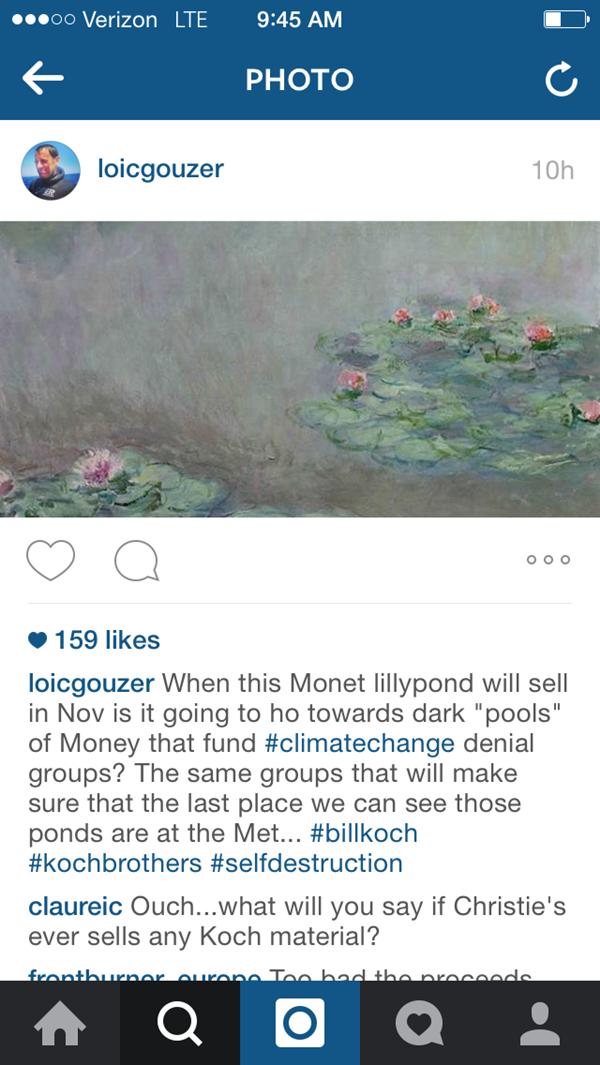
So what does a newbie art entrepreneur do when quick enough the market for the young and restless he had a hand in creating dries up? He goes secondary—lights, camera, action! Except sitting in the middle of the front row of every insignificant London auction only comes off as an overzealous kid at the first day of school trying to impress class and teacher alike by raising his hand and shining a ripe apple. And substituting mediocre flip art for (in my humble estimation) run-of-the-mill classic contemporary like Sean Scully and Anselm Kiefer is treading water. Flip has flopped. I’m afraid the days of ever escalating short-term returns for the middle of the middling won’t cut it anymore. And although Simcho has A+ clients like Internet maven Sean Parker (no one’s perfect) who he’s very publicly buying auction art for, the window for his variety of speculation has come to an abrupt end. Nothing substitutes for the slow accumulation of knowledge and connoisseurship.
Loic Gouzer, still in his 30s, has been promoted to Deputy Chairman, Post-War & Contemporary Art at leading auction house Christie’s. In light of that fact, I am glad I am not the only one who suffers moments of Tourette’s-like unprofessionalism. I was outdone last week by the enviro-activist spear-fishing pal of Leo DiCaprio. I understand culling dangerous breeds like sharks but if you love animals and the environment you don’t shoot harpoons into them, how could you?
I was sent a subsequently-deleted Loic Instagram post slagging off a Monet consigned to Sotheby’s upcoming New York Impressionist and modern sale, which I suspect might be illegal. I must admit it’s invigorating getting these types of tipoffs. In the post, he criticized the destructive environmental activities of David Koch, the seller of the work. A very clever, art loving friend of mine Claude Reich commented: “Ouch…what will you say if Christie’s ever sells any Koch material.” The post was shortly removed thereafter.
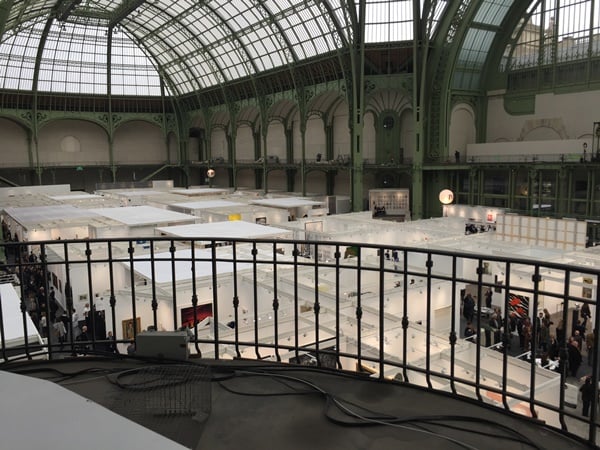
FIAC.
Image: Kenny Schachter.
Frieze vs. FIAC
Fast nipping at the heels of Frieze comes FIAC in Paris. Led by former gallerist Jennifer Flay, the fair has been on the up and up for the past few years. I remember Jennifer back in the day as an imposing successful dealer representing the likes of John Currin, Karen Kilimnik and Liz Larner early in their careers from 2001. As I’ve only been a regular at the much ballyhooed and improved fair, I was never the recipient of a pass.
Knowing so many exhibitors, a pass is not exactly the most fought after thing, but still…. Okay, so I may not be a full-fledged VIP-VIP, but not even a J-VIP (J for junior)? Jeez, what do you have to endure to try and spend some money? Should I boycott, I thought? That’s been done. I called FIAC for a pass to no avail, they told me I could buy entry for €275 or €300 including a panel discussion. I would have employed the timeworn, “Don’t you know who I am?” but they do.

Richard Prince, Detail of Untitled (good painting) (2013).
Image: Kenny Schachter
Not in a good way, Frieze has become the new New York Armory Show, i.e. depressing and dull. As much as I begrudge the offer to buy my way in (Simon Lee kindly ushered me in) FIAC is light and airy compared to the staleness of Frieze. I took my bar exam to become a lawyer on the very premises of the Armory and it’s as grim and horrific now as it was then.
Okay, Paris is on a short leash with police at every corner and, frankly, it’s a little scary, but the fair has wings, as strange as that sounds. FIAC has some weird kind of magic dust where Gavin Brown has gone from stand-offish to friendly to chatty in a matter of years, this fair retains a positive, refreshing atmosphere removed from the surfeit of other such events.
The obvious reason is that the Frieze tent stiflingly compresses the atmosphere whereas FIAC’s ‘tent’ happens to be the Grand Palais, a soaring well-lit space and structure as breathtakingly elegant as it is austere. In other words, you don’t have to strain to breathe. In fact, it’s so uplifting, I repeatedly felt like talking to strangers about art and the fair landscape.
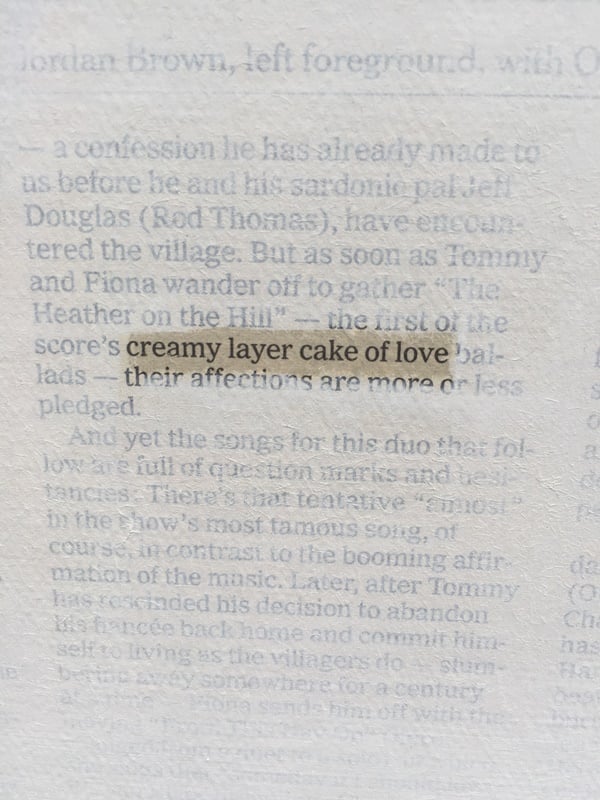
Richard Prince, Detail of Untitled (good painting) (2013).
Image: Kenny Schachter
For breakfast one morning I met with a magazine editor who practically suffered an art seizure four Friezes ago and hasn’t been able to return since. These things can be dangerous. But at FIAC, one aisle was better than both Frieze and Frieze Masters (I might be prone to exaggeration, but not by much). I even felt comfortable asking prices all over the place with none of the trepidation I’d have felt elsewhere; and the people couldn’t have been nicer. Even in Paris of all places.
And about the art: there were four new Wade Guytons, printer-paintings priced at $450,000 apiece, all more or less sold throughout the fair. Galerie Chantal Crousel of Paris had the best of the lot, a pair of handsome works by the good looking 43-year-old who’s managed to move the goalposts past the silkscreen in an austere, reductive yet aesthetically satisfying way. There’s art about other art, art about museums and galleries but here we are confronted by self-reflexive art about Wade’s own previous output. Hmm, what do you make of art that is as masturbatory as Vito Acconci and the recent onslaught of private museums but still looks good?
Other standouts included the painting installation by Michel Majerus at Neugerriemschneider from Berlin. The multimedia painter died prematurely in a plane accident at 35 years of age in 2002. His work foresaw the combining of media, technology, and conceptual conceit in a way that is still ahead of its time more than a decade on. And at €150,000 to €500,000 for one of the most ambitiously scaled paintings I’ve seen, it seems cheap!
If you haven’t made up your mind about the previously discussed (in the first part of this two-part Frieze week series), perennial market-pleaser Christopher Wool, maybe his rare 1986 bronze sculptural work entitled Muscle, on view at his long term dealer Luhring Augustine, would sway you. Priced at $60,000 for an edition of 10, the work resembled as much a giant turd as a double-sided dildo—one for the still adventurous collectors among us.
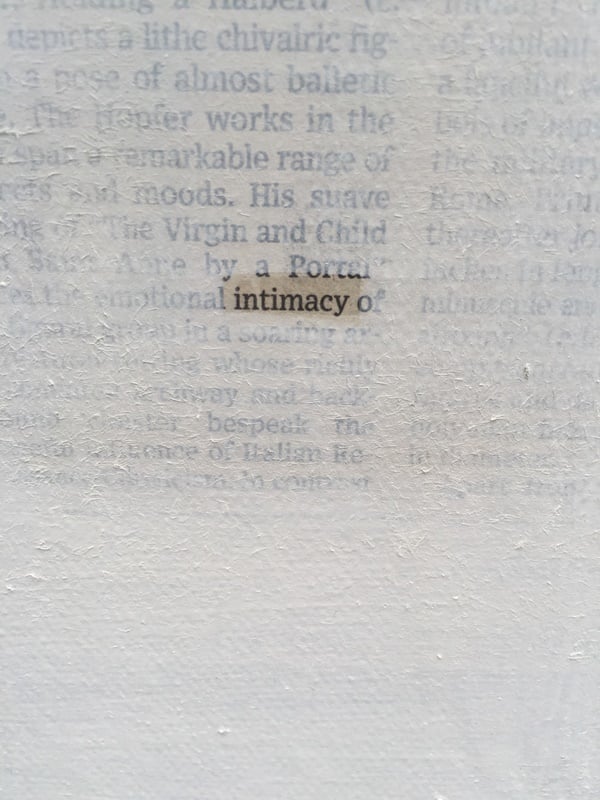
Richard Prince, Detail of Untitled (good painting) (2013).
Image: Kenny Schachter
At Gagosian, there were three new white monochromatic canvases by provocateur Richard Prince. Barely visible through the white veil of paint were newspaper texts stating respectively: “pleasure,” “intimacy,” and “creamy layer cake of love.” Enforcing the notion of our mutual feared sense of closeness, all were sold except for “intimacy.”
By the end of this endless art sojourn, by the time I made it to Paris Internationale, the art fair that everyone and their grandmother recommended visiting instead of Officiale—the official (far) off-site section of FIAC devoted to more emerging art—I was more of a zombie than a zombie formalist. The fair was as noted for the exquisite building it was housed in as it was for the fact there were more penis and testicle paintings than female nudes for once. The Guerilla Girls would rejoice.
The End (for now)
The upcoming New York November auctions will assuredly be awe-inspiring lunacy. We are still on the cusp of an historic shifting of how the world relates to and appreciates art. The recent stellar performance and increased liquidity of the market in the face of ever more volatile world markets only solidifies this.
And despite all the zero sum competition that drives the relentlessly competitive market, we end up forming, perhaps by default, a close-knit community of repeating faces seen over the course of many years, fairs, exhibitions and auctions (though with age it’s getting harder to recognize each other). Even people I’ve never gotten along with, we seem to be at the stage of giving into familiarity and longevity.
As I walked the aisles of FIAC I heard again and again that the 2.5 inch scar across my face, which I suffered in a June taxi accident, looked so much better than people had imagined it would; in fact, many seemed practically disappointed. But what I’ve heard even more in the months since are the number of people that read my recount of the events on artnet News of me catapulting across the back of a black London taxi who now, as a result, wear seat belts in cabs and insist that friends and family follow suit. Maybe it will even save a life; who’d have thought a social good would come from my art world exploits?